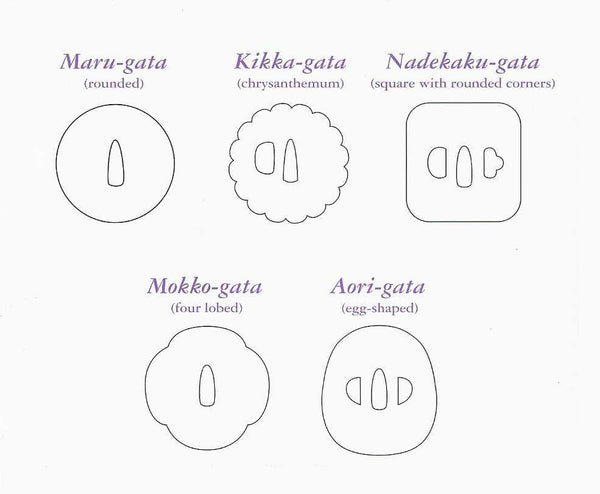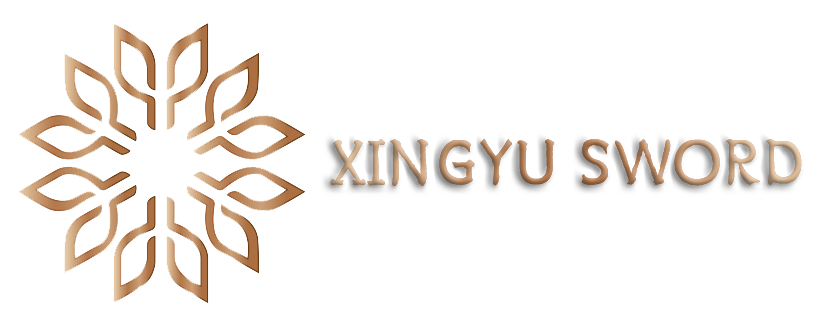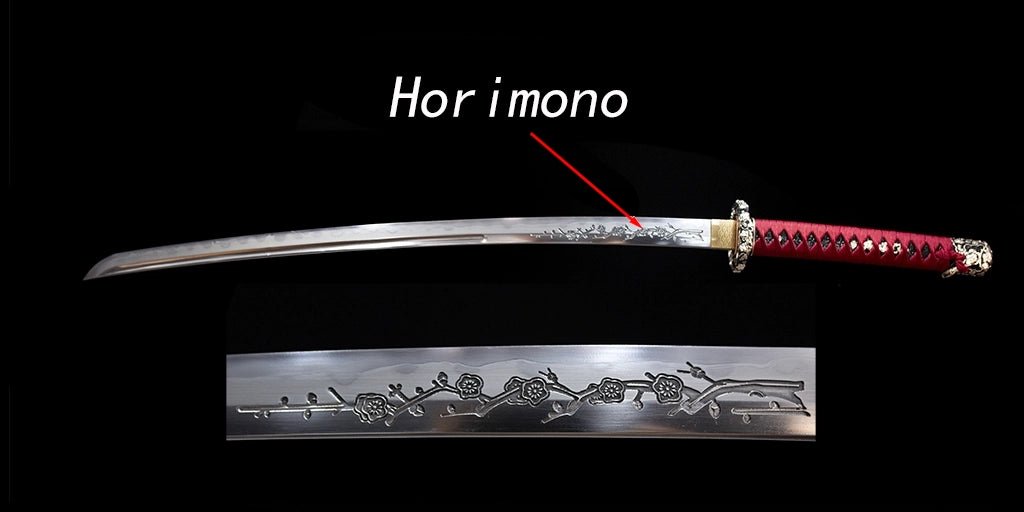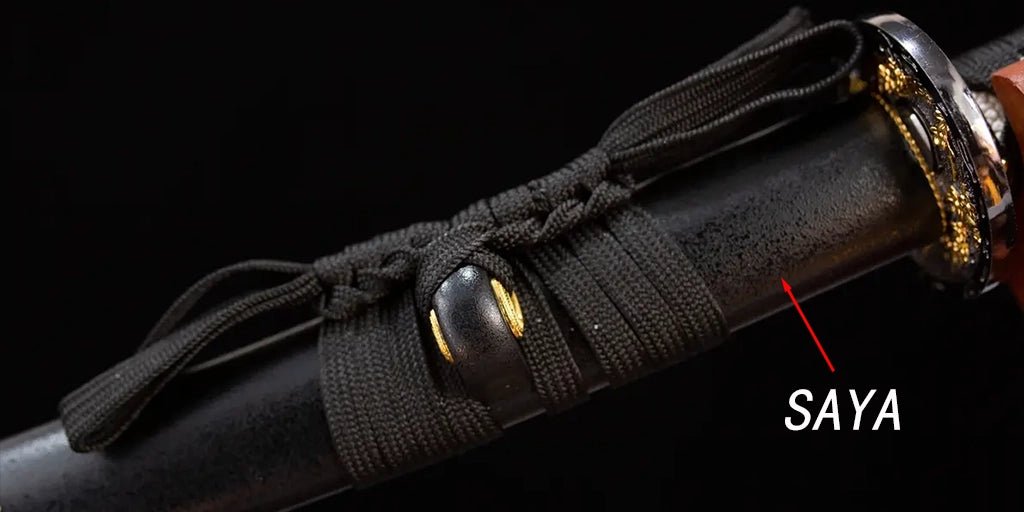Katana tsuba:Guard between handle and blade
tsuba for katana
The tsuba for katana is a very important accessory, If the sword equipment is the complete costume of a samurai, then the tsuba can be said to be the face of a samurai. Especially in the Edo period, when a samurai walked down the street, the first thing he saw was the tsuba on his sword. The artistic taste of the tsuba represented the style and achievement of the samurai, so the tsuba workers had to do their best to bring the tsuba's creativity to the extreme. In addition to studying the characteristics of the metal, tsuba workers also learn painting and calligraphy. The difference in quality of tsuba depends on the theme, composition layout, construction, application and preservation of materials, etc. Therefore, tsuba can be said to be the soul of sword equipment. and has become a work of art and collector's item in its own right, so we'll introduce it separately. The tsuba is the equivalent of the commonly known sword grill or hand guard, which has three functions.
One is to switch between sword and dagger;
Second, it protects the palm and wrist during combat;
Third, it is a symbol of social status.

Katana tsuba designs
There must be a hole in the center of the tsuba, which is similar to the shape of the Yangtze River Delta, and it is called "stem hole" or "central hole," and both sides of the stem hole can also be opened with a flattened circle. The left hole is called "Kozuka Cabinet Hole" for passing through Kozuka, and the right hole is called "Kogai Cabinet Hole" for passing through Kozuka.Kozuka Cabinet Hole and Kogai Cabinet Hole can exist at the same time, only one or none.

Prior to the Muromachi period, most of the tsukuba were utilitarian and simple, and most of the tsukuba were made by swordsmiths or armorers, and most of the tsukuba were made of openwork tsukuba with openwork carvings. In the Edo period, most of the iron tsuba and copper tsuba were made by full-time tsuba craftsmen, and their skills were at their peak. In terms of value, copper tsubas of the Edo period were in the middle price range, while the price of iron tsubas was polarized, and most of the good iron tsubas of the pre-Muromachi period were expensive, and most of the authors did not put their names on the tsubas. Most of the good iron tsubas from before the Muromachi period are expensive and most of the authors do not make a mark on them. The modern iron tsubas, which are of poor quality and lack creativity in their designs, are not much appreciated.
Tsuba pattern theme design and workmanship complex and meticulous, pattern subject matter according to faction, region (natural environment), personal preference and reflect each other, the elements of the dragon, tiger, lion, birds, people, landscapes, animals, insects, plants, geometric shapes, words, life props, etc. are the main.


2. The iron armguard made by a Japanese sword craftsman in the Muromachi era is decorated with a simple piece of iron carved with the outline of a dragonfly.
3. The exquisite handguards of Edo-era sculptors show the outline of a crane.
4. Iron arm guards carved with many gods and a helmet (kabuto). These patterns are hollowed and carved with exquisite details, and some parts are colored with gold foil, which are works of the Edo period.
5. The copper hilt of the Momoyama period, with the outer ring made of silver. The main body of the hilt and the edge metal are colored, decorated by punching and filing, and there are simple ring filing lines on the main body of the guard.
7. This armguard is made of tian shakuco(shakuco' a copper-gold alloy) and has a beautiful black patina luster. Decorative patterns are a series of black dots nanako(nanako (fish eggs). Each dot is carved with a chisel, and the two inlaid lions are made of gold and red copper, respectively. This work was made in the late years of the shogunate (1800-1850), near the end of the Edo period.
8. These two images are the front and back of the same iron arm guard made by Natsuo in the late Teedo period, engraved with rain and peony.
9. This is a modern armguard made by Toshiyuki Tamaoka, signed.
"Tamaoka", dated 2009, is mainly made of hollowed out cherry blossoms in the Sukashi style, and the edge and some of the cherry blossoms are inlaid with gold thread (zogan).
how to make tsuba
Master the proportion of metal alloy, control the improvement of temperature technology, and create difficult points of inlay, carving, and coloring. The key to the pros and cons of a tsuba is whether the materials are properly selected, whether the design style is ingenious, whether the composition and space allocation is appropriate, whether the construction technology is excellent, how the overall feeling is after the creation is completed, whether it is made by famous workers, and whether it is in good condition after hundreds of years.
Tsuba are generally made of iron or copper alloy, and most of the copper tsuba were made after the Taoshan era. Most of the base is inlaid, gilded, and gold-plated, and the quality is more obvious than that of iron tsuba. Most copper alloy base materials are mixed with copper, silver, copper, lead, tin, copper, lead and other materials in different colors in proportion, with elegant luster and moderate hardness, which is the best alloy base material. Tietsuba exists in all ages. Tietsuba must undergo strict training and its texture is pure, dark and smooth after years of erosion. If the surface is covered with light yellow, light red and gray, it means that the iron is not good and not top quality.
How to distinguish the front and back of tsuba
The tsuba is for the oncoming opponent to see. katana, wakizashi, tanto, etc., Most of the time, the sword is in the scabbard with the blade facing upwards and then worn at the waist, so the side toward the hilt is the front and the side toward the blade is the back. The distinction between obverse and reverse is mainly based on the following rules, but there are quite a few exceptions to the old tsuba rarity.1, kozuka-bitsu-ana on the left and kogai-hitsu-ana (if any) on the right, which is the obverse side.2, if there are many motifs and the main motifs are to the right, which is the obverse side.3, if there is an authorial inscription, the inscription side is the obverse side.4, if there is an authorial inscription, which is the obverse side, which is the obverse side, which is the reverse side. However, there are more exceptions to this rule, and priority is given to judging according to 1 and 2.4 If kozuka-bitsu-ana and kogai-hitsu-ana, or both sides are symmetrical and the motifs are the same on both sides, and there is no author's inscription yet, then we can only look at the seppa-dai and nasago-hitsu-ana, and the carving is more numerous or the sekigane is set more The one with more carvings or a more disorganized sekigane is the obverse side, and the one with a flatter seppa-dai and a more complete nasago-hitsu-ana is the reverse side. Because the frontal side touches a large area of fuchi, the requirement for flatness is not as high, while the back side touches a small area of habaki, and the nakago-dai circle should be as complete as possible. If none of the above laws can be determined, then go with your preference.

It's worth noting that fuchi and kashira、menuki basically come in sets with tsuba, in the same material and pattern, or you can choose them to customize katana.



Leave a comment
This site is protected by hCaptcha and the hCaptcha Privacy Policy and Terms of Service apply.